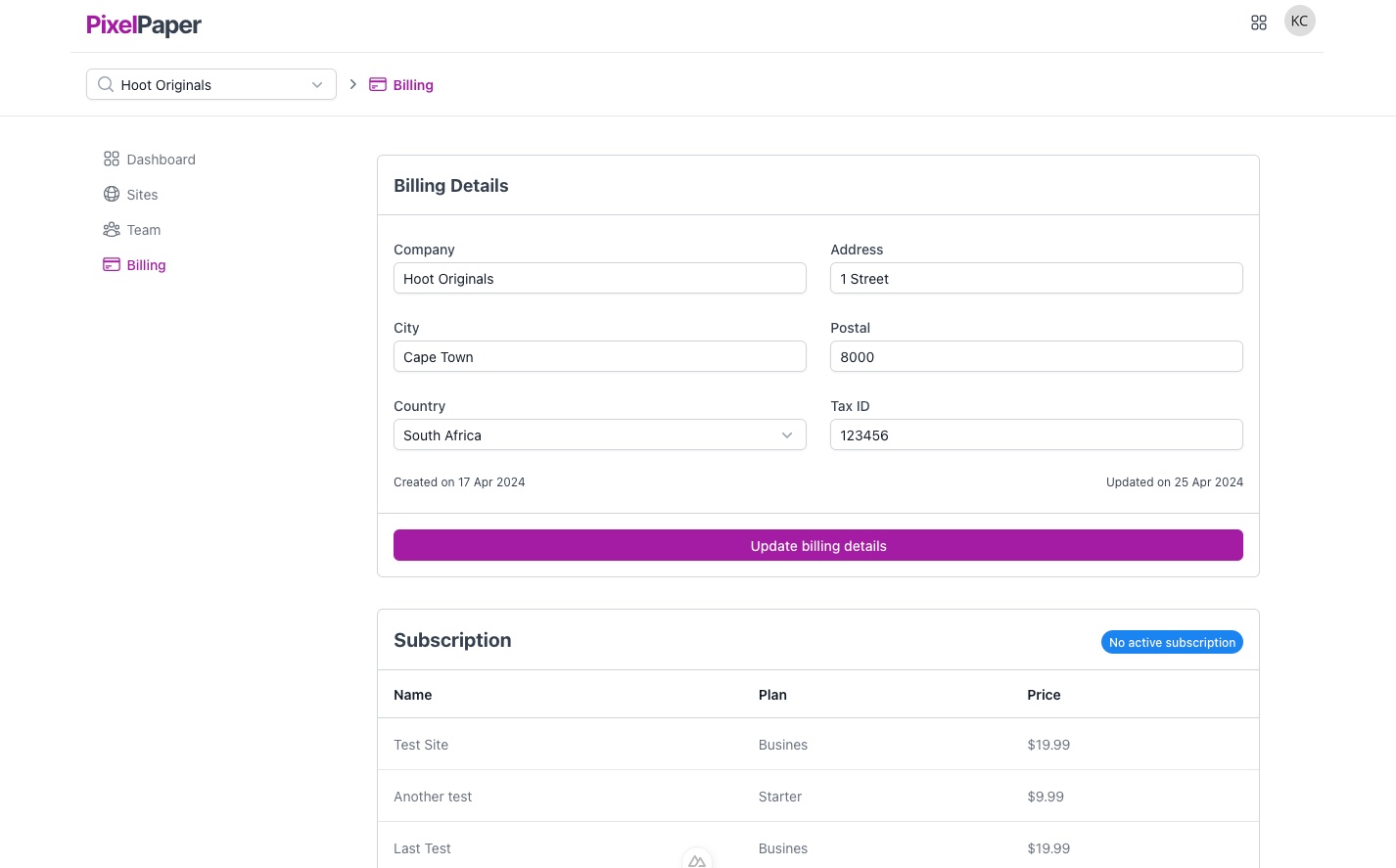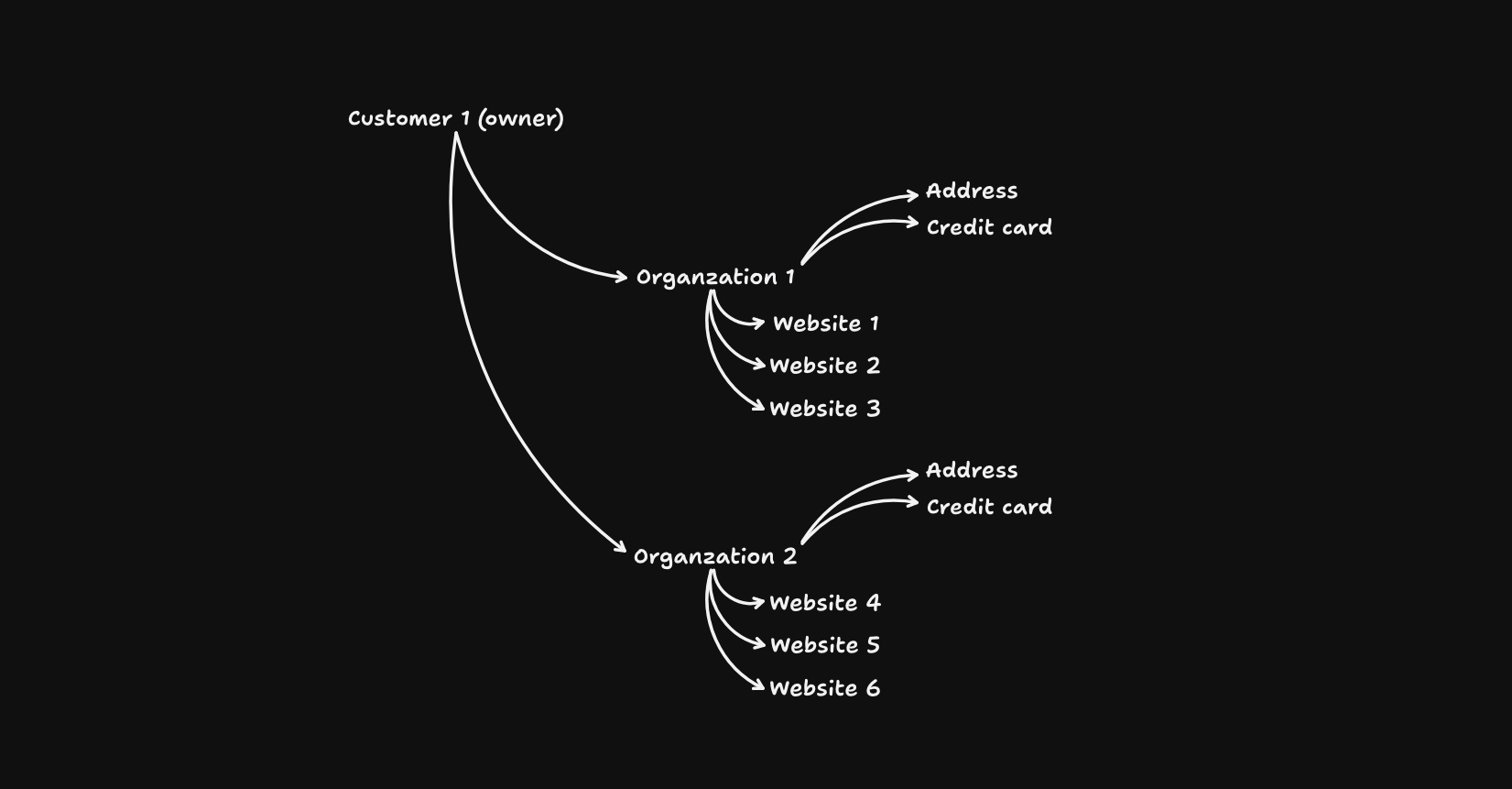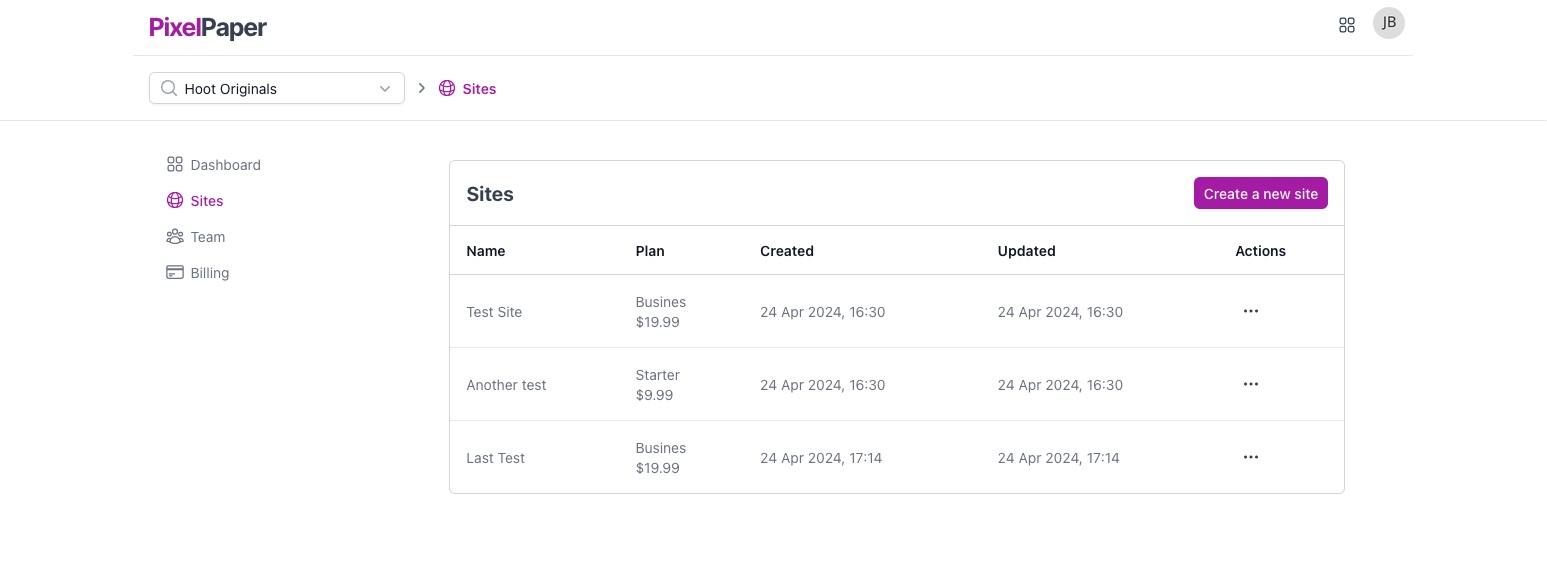Billing and Team Mangement
Billing and Team Management across multiple orgs, made easy.
Introduction
Paying for software online is second nature to most of us these days. Most of the tools and services we use, whether you’re an individual or a business, are only available to us as an online subscription.
Yet, despite this reality, it is surprising how complicated, inflexible or even limited the billing experience is in some online services. This is especially true when it comes to managing resources across multiple businesses/organizations.
Billing, our approach
PixelPaper is not fully complete or even out of beta, yet we already have customers that need to have multiple orgs with separate billing details and payment methods for each.
As a result, we set out to tackle this well, right from the start. It’s important to us that this experience doesn’t feel like an afterthought. So we painstakingly designed and built an org, team and billing management dashboard that we believe makes it easy for our customers to do just that.
Although we’ll explain a few details about the billing dashboard and how it works, this post is really just a quick introduction. If you’ve landed here looking for more information about how to use our billing system, please view our docs.

PixelPaper Subscriptions Explained
To understand some of the design decisions, we’ll start at the “lowest level” part of the billing system; subscriptions. Let’s quickly chat about some of the reasons we’ve implemented subscriptions the way we have, which will set the stage for why the rest of the billing system works the way it does.
We have chosen to limit ourselves to allow only a single subscription for an organization. This is done for a few reasons, but this is hardly an exhaustive list:
- Credit card providers: Many banks and credit card providers will flag payments where there are multiple payments from a single provider (in this case PixelPaper), resulting in failed transactions, which leads to all manner of unwanted side effects.
- Accounting: Managing multiple payments from your organization to a single provider causes additional work and can be unnecessarily confusing or complicated. Collapsing all costs into a single transaction/invoice keeps things efficient and easy to reason about.
- User experience: Limiting ourselves to a single subscription which adapts to a business’ needs, based on their usage, means that we can provide our customers with a very simple and easy to understand interface. This also simplifies maintenance, so that we can work on features that add value to our customers.
The end result is that a subscription is made up of the total number of sites an organization has linked to it. You have full control to add and remove sites to and from your org. Each time you do this, PixelPaper will automatically update your subscription, which takes effect at your next billing cycle. Each new site added comes with a 14 day free trial.
The structure
Now that you understand how and why we’ve implemented subscriptions the way we have, here’s a simple diagram to further explain how a customer can manage multiple sites, across multiple orgs, with ease:

Site Management
Sites are the cornerstone of PixelPaper. The high level management of your sites is really simple. To see your sites, you will first need to select a organization, but this is done automatically for you if you only have a single org (the default).
An important point to make and take note of here is that, as described in the above section about PixelPaper subscriptions, each site forms part of a line item in your subscription. Said differently, you are charged for each site that you add to your org. This is pretty self explanatory as you have to choose a plan when you create a new site in your org.
As you can imagine, managing the resources (such as pages, images, videos etc), settings and configuration of a site is a bit more involved and is not related to billing, so we’ll tackle that in a separate post.

Org Management
When you register with PixelPaper, we automatically create an org for you. If you are an individual, with no need for invoices to reflect business details and tax numbers, you don’t need to do anything.
If you represent a business, you can quickly and easily update your billing information and Tax/VAT number so that your invoices contain all the information required.
All sites belong to an org. The number of sites in an org determine the total cost of a subscription.

Team Management
Hopefully the above helps to illustrate how a single customer can set up multiple, self contained orgs. Of course no org is complete without team members.
Adding team members is as easy as inviting someone by providing their email address and selecting the role you would like them to have. Roles are used to manage access to various parts of PixelPaper. Don’t worry, we’ve kept it really simple, so that you don’t need to overthink this.
PixelPaper will create accounts and send invitation emails to your team so that you don’t have to do any of this.
Once you have invited team members, there are a few management options available to. Here are a few keys options:
- Resend invitation email
- Update your team member’s role
- Promote them to owner
- Delete them from the org

Thanks
Thanks for reading! As I said before, PixelPaper is not out of beta yet, so I’m sure we’ll find edge cases and learn about other customer needs as more and more people start to work with it, but this is already something that we are pretty proud of.
Until next time!
